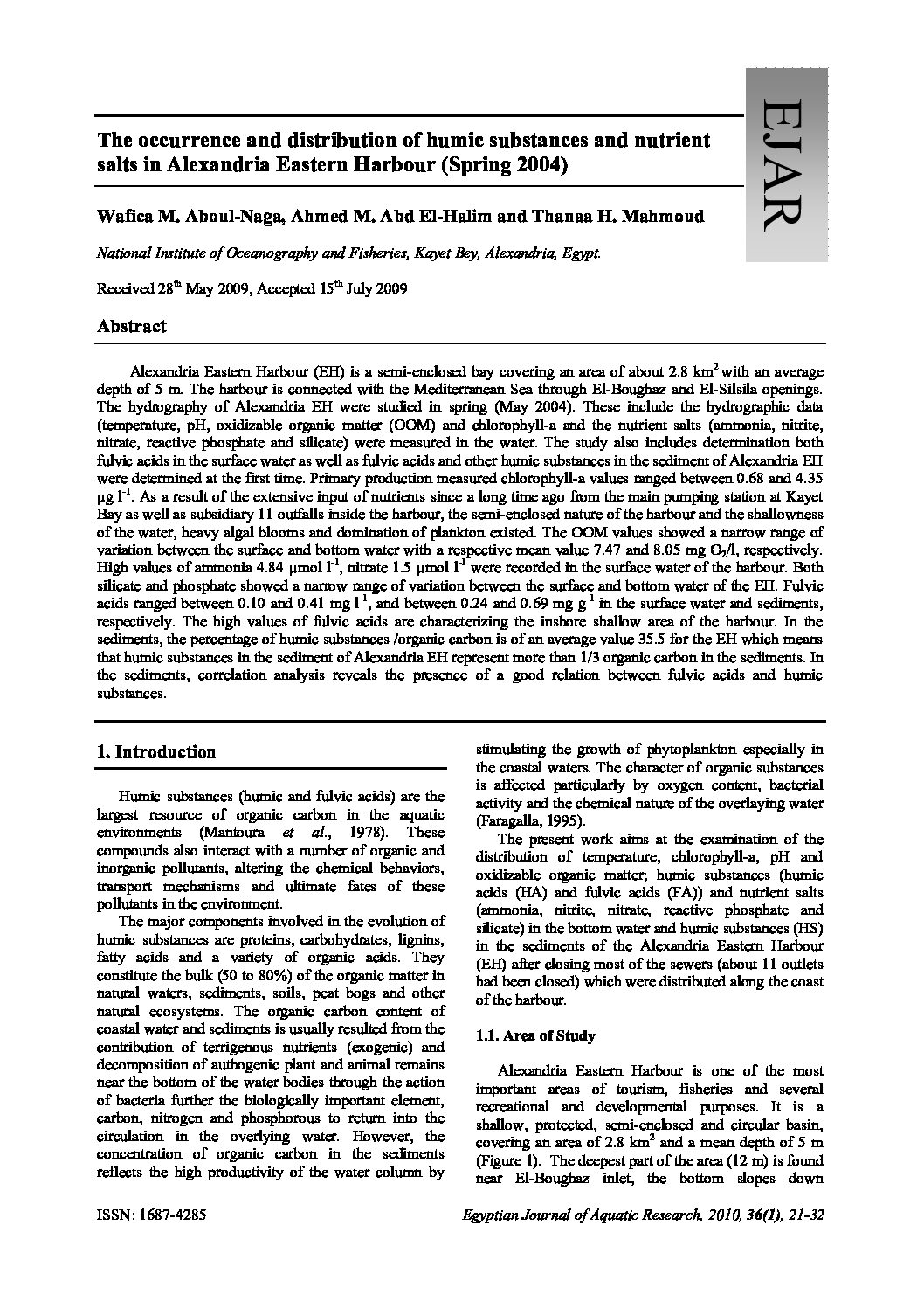Categories
vol-36The occurrence and distribution of humic substances and nutrient
salts in Alexandria Eastern Harbour (Spring 2004)
Wafica M. Aboul-Naga, Ahmed M. Abd El-Halim and Thanaa H. Mahmoud
National Institute of Oceanography and Fisheries, Kayet Bey, Alexandria, Egypt.
Received 28th May 2009, Accepted 15th July 2009
Abstract
Alexandria Eastern Harbour (EH) is a semi-enclosed bay covering an area of about 2.8 km2 with an average
depth of 5 m. The harbour is connected with the Mediterranean Sea through El-Boughaz and El-Silsila openings.
The hydrography of Alexandria EH were studied in spring (May 2004). These include the hydrographic data
(temperature, pH, oxidizable organic matter (OOM) and chlorophyll-a and the nutrient salts (ammonia, nitrite,
nitrate, reactive phosphate and silicate) were measured in the water. The study also includes determination both
fulvic acids in the surface water as well as fulvic acids and other humic substances in the sediment of Alexandria EH
were determined at the first time. Primary production measured chlorophyll-a values ranged between 0.68 and 4.35
µg l-1. As a result of the extensive input of nutrients since a long time ago from the main pumping station at Kayet
Bay as well as subsidiary 11 outfalls inside the harbour, the semi-enclosed nature of the harbour and the shallowness
of the water, heavy algal blooms and domination of plankton existed. The OOM values showed a narrow range of
variation between the surface and bottom water with a respective mean value 7.47 and 8.05 mg O2/l, respectively.
High values of ammonia 4.84 µmol l-1, nitrate 1.5 µmol l-1 were recorded in the surface water of the harbour. Both
silicate and phosphate showed a narrow range of variation between the surface and bottom water of the EH. Fulvic
acids ranged between 0.10 and 0.41 mg l-1, and between 0.24 and 0.69 mg g-1 in the surface water and sediments,
respectively. The high values of fulvic acids are characterizing the inshore shallow area of the harbour. In the
sediments, the percentage of humic substances /organic carbon is of an average value 35.5 for the EH which means
that humic substances in the sediment of Alexandria EH represent more than 1/3 organic carbon in the sediments. In
the sediments, correlation analysis reveals the presence of a good relation between fulvic acids and humic
substances.







